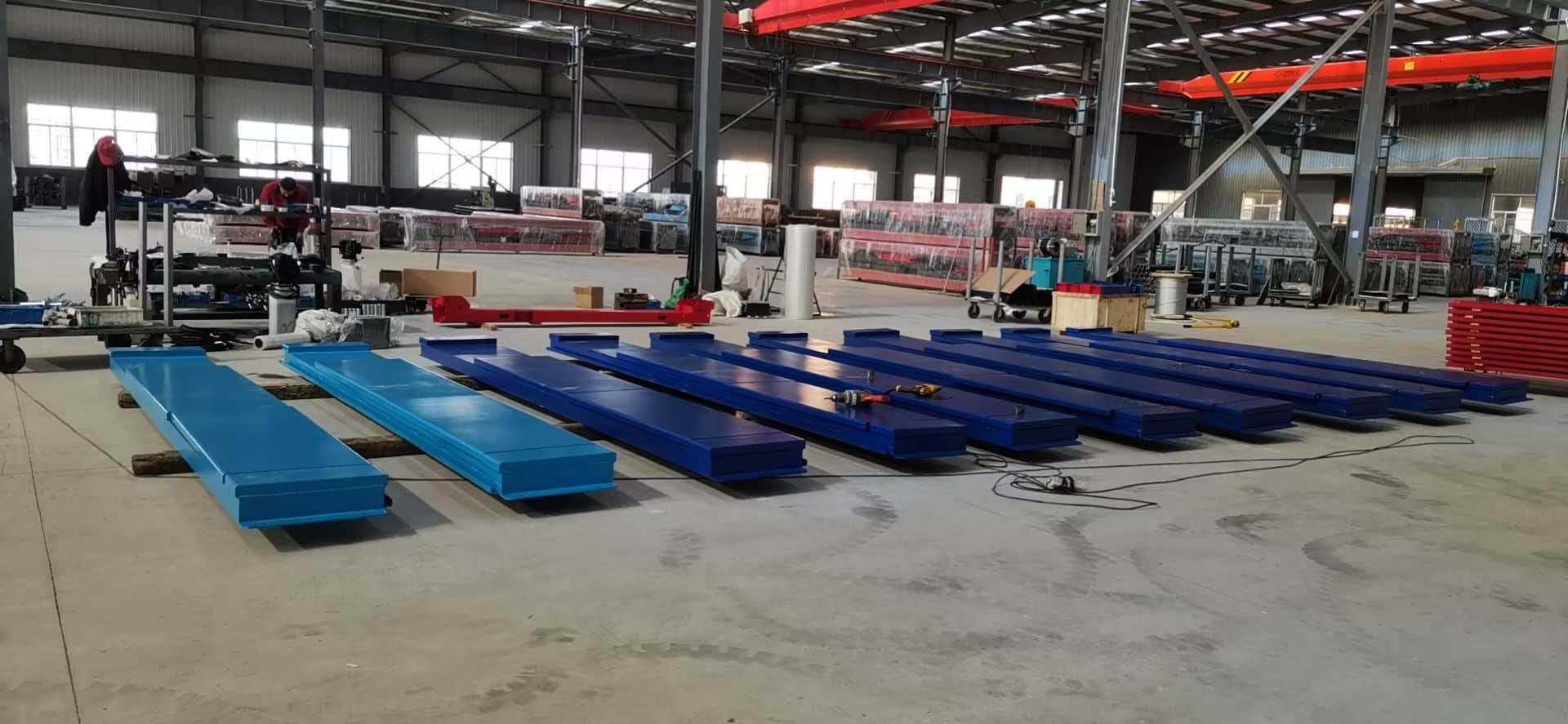Úvod
## Meniče pneumatík zjednodušujú proces výmeny pneumatík. Už sa nemusíte spoliehať na manuálne nástroje, ktoré si vyžadujú námahu a zručnosť. Tieto stroje zvyšujú presnosť, zabezpečujú správne zarovnanie pneumatík. Taktiež znižujú riziko poškodenia kolies. Ich používaním zlepšujete bezpečnosť a šetríte čas počas údržby vozidla.
## Ako fungujú meniče pneumatík
## Komponenty meničov pneumatík
## Meniče pneumatík pozostávajú z niekoľkých kľúčových komponentov, ktoré spolupracujú na zjednodušení výmeny pneumatík. Otočná doska je centrálnou časťou, kde upevníte koleso. Otáča sa, aby umožnila jednoduché montovanie a demontovanie pneumatík. Rozbíjač bead uvoľňuje pneumatiku z disku aplikovaním kontrolovaného tlaku. Montážna rameno drží pneumatiku na mieste počas inštalácie. Mnohé stroje tiež obsahujú systém ovládaný pedálom, ktorý vám poskytuje bezdotykovú kontrolu nad procesom. Tieto komponenty zabezpečujú, že stroj funguje efektívne a znižuje riziko chýb.
## Proces montáže a demontáže
## Proces montáže a demontáže je jednoduchý s meničmi pneumatík. Aby ste odstránili pneumatiku, najprv zabezpečíte koleso na otočnom stole. Potom použijete rozbíjač bead na uvoľnenie pneumatiky z disku. Keď je bead voľný, montážna rameno vám pomôže zdvihnúť pneumatiku z kolesa. Pri inštalácii umiestnite novú pneumatiku na disk a použijete montážne rameno na jej zatlačenie na miesto. Otočný stôl otáča kolesom, čím zabezpečuje, že pneumatika sa dobre prispôsobí. Tento proces minimalizuje fyzické namáhanie a zabezpečuje správne zarovnanie.
## Zníženie manuálneho úsilia s meničmi pneumatík
## Meniče pneumatík výrazne znižujú manuálne úsilie potrebné na výmenu pneumatík. Namiesto spoliehania sa na ručné náradie používate automatizované funkcie stroja na manipuláciu s ťažkým zdvíhaním. Rozbíjač bead eliminuje potrebu manuálneho vyberania pneumatík z diskov. Otočný stôl a montážne rameno zjednodušujú proces, čím šetria váš čas a energiu. Používaním týchto strojov sa môžete sústrediť na presnosť a bezpečnosť bez vyčerpania.
Výhody meničov pneumatík
Efektivita času pri údržbe
Meniče pneumatík vám šetria cenný čas počas údržby vozidla. Automatizované funkcie vykonávajú úlohy ako uvoľnenie okraja a otáčanie kolesa. Tieto procesy, ktoré trvajú minúty s prístrojom, by trvali oveľa dlhšie, ak by sa robili ručne. Môžete rýchlejšie dokončiť výmeny pneumatík, čo vám umožní sústrediť sa na iné dôležité úlohy. Táto efektivita je obzvlášť prospešná v rušných dielňach, kde je čas kritický.
Zvýšená bezpečnosť pre mechanikov a vozidlá
Používanie meničov pneumatík zlepšuje bezpečnosť pre vás aj vozidlo. Stroj eliminuje potrebu nadmerného fyzického úsilia, čím znižuje riziko zranení, ako je svalové napätie. Zabezpečuje tiež, že pneumatika je manipulovaná s presnosťou, čím sa minimalizuje pravdepodobnosť nehôd. Pre vozidlá kontrolované procesy zabraňujú poškodeniu citlivých komponentov, ako sú disky a senzory. To robí celý proces údržby bezpečnejším a spoľahlivejším.
Prevencia poškodenia kolies a pneumatík
Manuálne výmeny pneumatík môžu viesť k škrabancom alebo preliačinám na ráfiku. Vymieňače pneumatík používajú špecializované nástroje, ktoré chránia ráfik a pneumatiku počas procesu. Rozbíjač bead aplikuje presne správne množstvo tlaku, aby sa predišlo roztrhnutiu pneumatiky. Otočný stôl drží koleso bezpečne, čím zabraňuje zbytočnému pohybu. Tieto funkcie zabezpečujú, že vaše kolesá a pneumatiky zostanú v vynikajúcom stave.
Úspory nákladov v dlhodobom horizonte
Investícia do vymieňača pneumatík vám môže ušetriť peniaze v priebehu času. Stroj znižuje pravdepodobnosť chýb, ktoré vedú k nákladným opravám alebo výmenám. Taktiež urýchľuje proces údržby, čo vám umožňuje obslúžiť viac zákazníkov, ak prevádzkujete dielňu. Chránením pneumatík a kolies pred poškodením sa vyhnete zbytočným nákladom. V priebehu rokov sa úspory sčítajú, čo robí z vymieňačov pneumatík nákladovo efektívne riešenie.
Typy vymieňačov pneumatík
Manuálne vymieňače pneumatík
## Ručné meniče pneumatík sa spoliehajú na vašu fyzickú námahu pri výmene pneumatík. Tieto stroje sú jednoduché a nákladovo efektívne, čo ich robí ideálnymi pre malé použitie alebo osobné garáže. Používate páky a nástroje na roztrhnutie okraja a nasadenie alebo demontáž pneumatiky. Hoci si vyžadujú viac námahy, dávajú vám plnú kontrolu nad procesom. Ručné modely najlepšie fungujú pre štandardné pneumatiky a nie sú vhodné pre väčšie alebo špeciálne pneumatiky. Ak hľadáte cenovo dostupnú možnosť a nevadí vám práca, tento typ by mohol vyhovovať vašim potrebám.
## Polautomatické meniče pneumatík
## Polautomatické modely kombinujú manuálnu obsluhu s mechanickou pomocou. Tieto stroje majú montážnu ruku, ktorú nastavujete manuálne, zatiaľ čo otočný stôl otáča koleso automaticky. Tento dizajn znižuje vašu pracovnú záťaž a urýchľuje proces. Polautomatické meniče pneumatík sú skvelou voľbou pre malé dielne alebo mierne používanie. Zvládajú rôzne veľkosti pneumatík a ponúkajú rovnováhu medzi cenovou dostupnosťou a efektívnosťou.
## Plne automatické meniče pneumatík
## Plne automatické meniče pneumatík vykonávajú väčšinu práce za vás. Tieto stroje využívajú pokročilé funkcie ako automatizované montážne ramená a rozbíjače beadov. Jednoducho zabezpečíte koleso a stroj sa postará o zvyšok. Plne automatické modely šetria čas a znižujú fyzické zaťaženie, čo ich robí ideálnymi pre rušné dielne. Taktiež dobre fungujú s väčšími alebo nízkoprofilovými pneumatikami. Ak uprednostňujete rýchlosť a pohodlie, tento typ stojí za zváženie.
## Špecializované meniče pneumatík pre jedinečné aplikácie
## Špecializované meniče pneumatík vyhovujú špecifickým potrebám, ako sú pneumatiky motocyklov alebo pneumatiky ťažkých vozidiel. Tieto stroje prichádzajú s jedinečnými funkciami prispôsobenými ich aplikáciám. Napríklad, meniče pneumatík pre motocykle majú menšie otočné stoly, aby sa zmestili na úzke kolesá. Modely pre ťažké použitie zvládajú väčšie, odolnejšie pneumatiky s ľahkosťou. Ak pracujete so špecializovanými vozidlami, investícia do špecializovaného meniča pneumatík zabezpečuje presnosť a efektívnosť.
Tip: ## Vyberte si menič pneumatík na základe vašej pracovnej záťaže, typov pneumatík a rozpočtu. Správny stroj môže uľahčiť a zefektívniť vaše údržbové úlohy.
## Pokročilé funkcie v meničoch pneumatík
## Digitálne a automatizované technológie
## Moderné meniče pneumatík sú vybavené digitálnymi a automatizovanými technológiami, ktoré zjednodušujú výmenu pneumatík. Tieto stroje často obsahujú senzory, ktoré monitorujú tlak v pneumatikách a zarovnanie počas procesu. Niektoré modely obsahujú dotykové obrazovky, ktoré vám umožňujú vybrať nastavenia pre rôzne typy pneumatík. Automatizácia znižuje potrebu manuálnych úprav, čím zabezpečuje konzistentné výsledky zakaždým. Pokročilé systémy môžu dokonca detekovať potenciálne problémy, ako je nerovnomerné opotrebovanie, skôr ako sa stanú vážnymi problémami. Použitím týchto technológií môžete zlepšiť presnosť a ušetriť čas počas údržby.
## Presnosť s pokročilými upínacími systémami
## Pokročilé upínacie systémy zabezpečujú, že koleso zostáva bezpečne upevnené počas celého procesu. Tieto systémy používajú nastaviteľné svorky na pevné uchopenie kolesa bez spôsobenia poškodenia. Mnohé modely obsahujú samocentrovacie svorky, ktoré automaticky zarovnávajú koleso pre lepšiu presnosť. Táto funkcia je obzvlášť užitočná pri práci s nízkoprofilovými alebo špeciálnymi pneumatikami. Vylepšený úchop znižuje riziko sklzu, čo vám umožňuje pracovať efektívnejšie. S týmito systémami môžete s dôverou manipulovať s širokým spektrom veľkostí a dizajnov pneumatík.
## Užívateľsky prívetivé rozhrania pre efektivitu
## Užívateľsky prívetivé rozhrania robia obsluhu meničov pneumatík jednoduchou, aj pre začiatočníkov. Mnohé stroje majú intuitívne ovládanie, ako sú pedále alebo ergonomické páky, aby sa zjednodušili úlohy. Digitálne displeje poskytujú jasné pokyny a spätnú väzbu v reálnom čase, čo vám pomáha vyhnúť sa chybám. Niektoré modely tiež ponúkajú prednastavené programy pre bežné typy pneumatík, čím šetria čas pri nastavení. Tieto rozhrania znižujú krivku učenia a umožňujú vám sústrediť sa na poskytovanie kvalitnej údržby. Dobre navrhnuté rozhranie zabezpečuje, že môžete pracovať rýchlo a efektívne, aj počas rušných období.
## Meniče pneumatík zohrávajú kľúčovú úlohu v modernej údržbe vozidiel. Zlepšujú efektivitu, zvyšujú bezpečnosť a zabezpečujú presnosť pri výmene pneumatík. Pochopením ich funkcií a výhod môžete robiť inteligentnejšie rozhodnutia pre vaše potreby. Investovanie do správneho vybavenia zjednodušuje vašu prácu a prináša dlhodobé úspory pre vaše údržbové úlohy.
FAQ
## Aký je najlepší typ meniča pneumatík pre začiatočníkov?
## Ručné alebo poloautomatické meniče pneumatík sú najlepšie pre začiatočníkov. Sú cenovo dostupné, ľahko sa používajú a poskytujú dostatočnú kontrolu na naučenie sa základov výmeny pneumatík.
## Ako často by ste mali udržiavať menič pneumatík?
## Mali by ste svoj menič pneumatík kontrolovať a čistiť každý mesiac. Pravidelná údržba zabezpečuje hladký chod, zabraňuje opotrebovaniu a predlžuje životnosť stroja.
## Môžu meniče pneumatík zvládnuť všetky veľkosti pneumatík?
## Nie všetky meniče pneumatík sú vhodné pre každú veľkosť pneumatiky. Špecializované modely zvládajú jedinečné aplikácie, ako sú motocykle alebo pneumatiky pre ťažké stroje. Vyberte si stroj na základe svojich konkrétnych potrieb.

